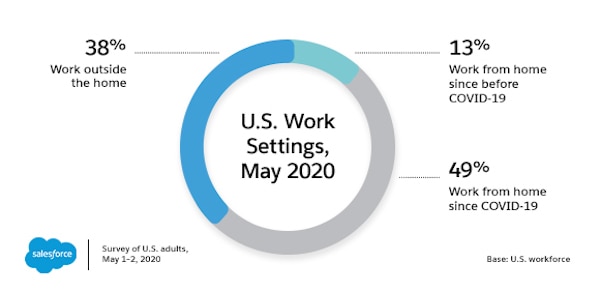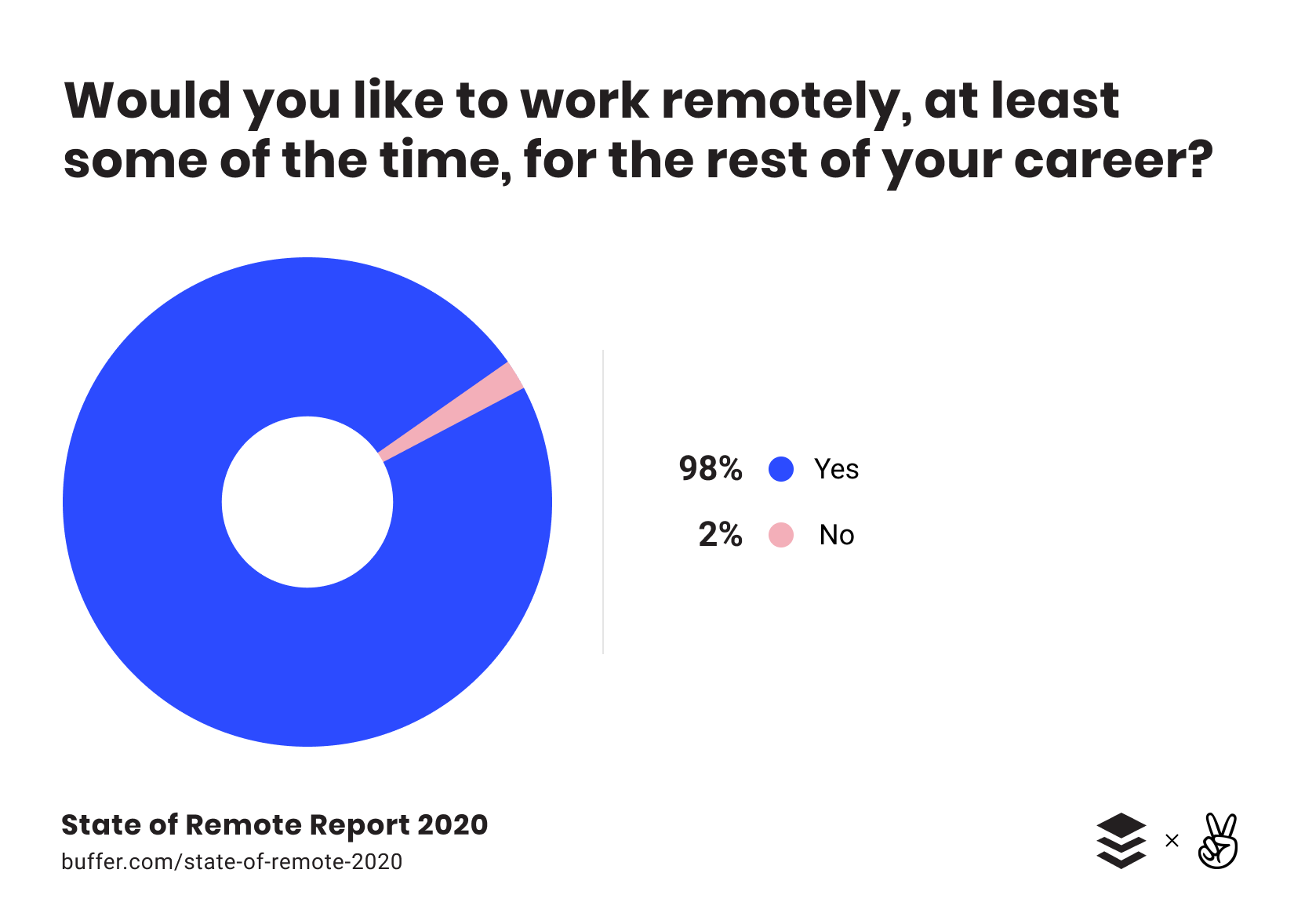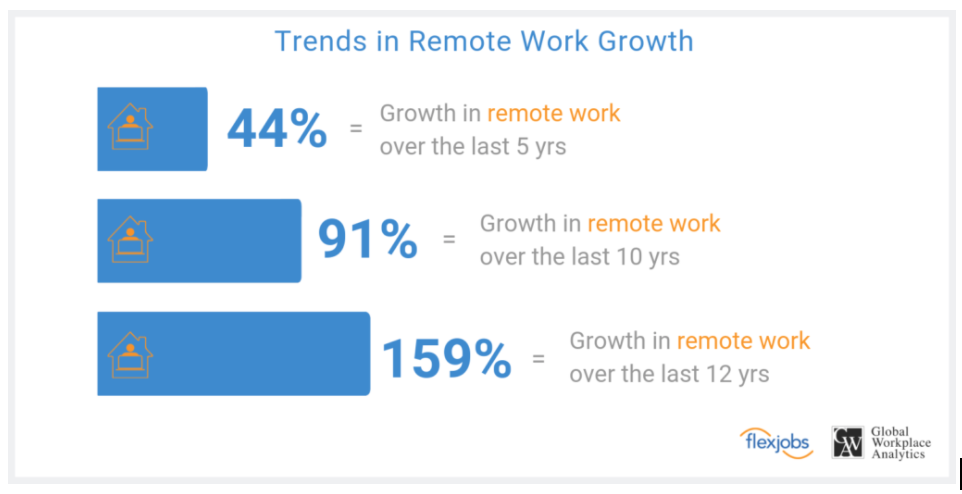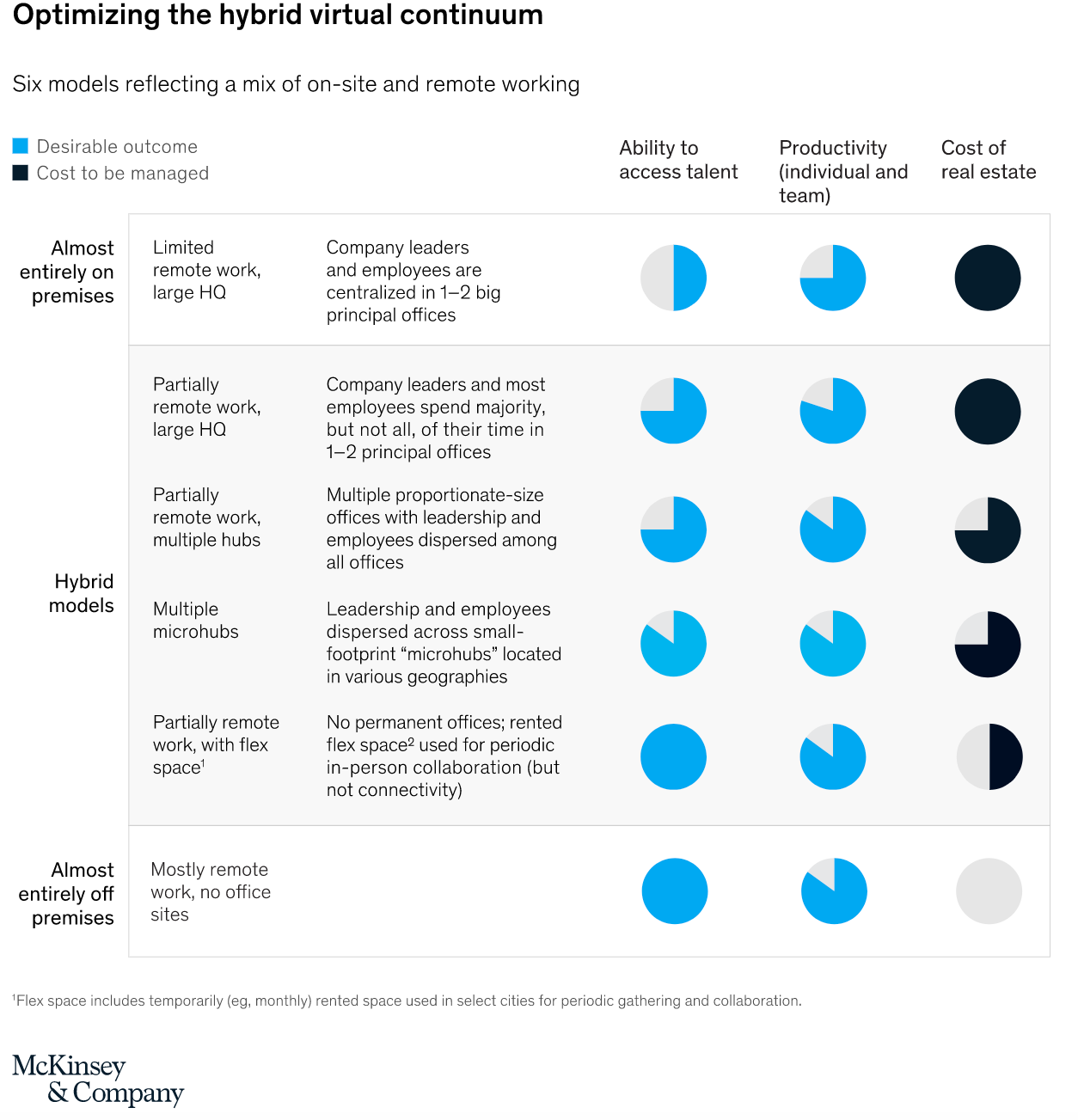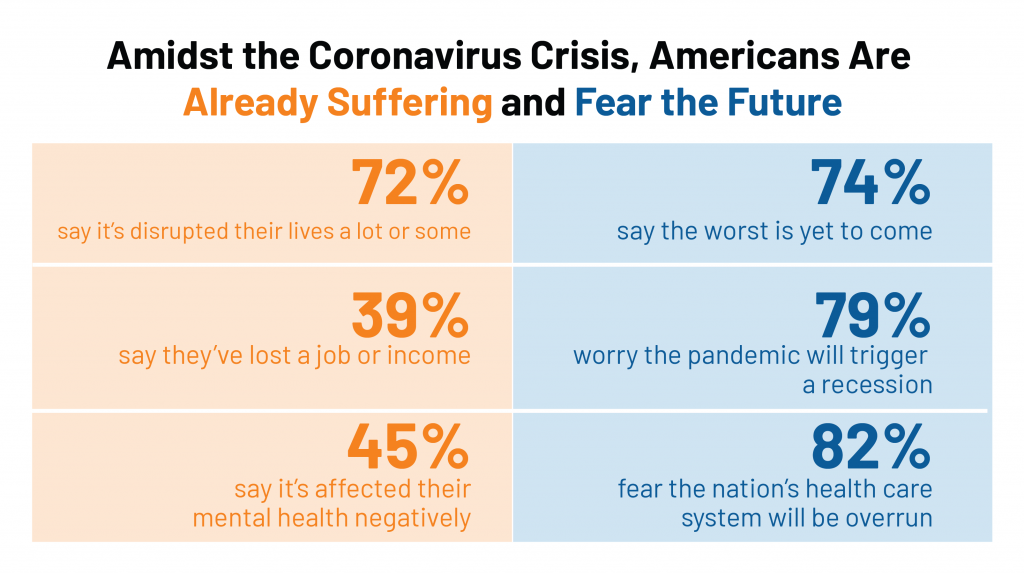As the business world continues to desperately cut away from the didactic year of 2020, 2021 has not proven to be all that… helpful. The corporate residue of scattered workforces, a lingering global virus, and a slowly rebounding (yet confused) economy reminds us by the minute that we are not close to “being out of the woods.” We are still revamping and reassessing with revised goals and doubling back to ensure that our people remain the priority, all while trying to keep our businesses afloat, or dare we hope, profitable.
Since it will require nothing less than a laser-like focus to engage, enrich, and guide our employees through this year, we want to highlight specific focal points that will help leaders at all levels engage and lead their employees through a dynamic and fruitful 2021.
Lessons learned from 2020
Yes, 2020 will go down in history as a year to be remembered. Businesses and, specifically, their employees, were stretched in just about every possible way during the year. For example, at the beginning of the year, the percentage of employers offering at least partial remote work or similar work flexibility was 39 percent. At the end of the year, it jumped to businesses transitioning, out of necessity, to 57 percent of employees working out of the home almost entirely (many argue that this number is low). And if you remove manufacturing-related jobs (as well as other non-office-related jobs that do not permit remote work), that percentage is dramatically higher.
The fact that more than half of America’s office-based workforce transitioned to remote spaces in a matter of months is unimaginable had we not actually gone through it, especially when one considers all the planning, budgeting, people management issues, technical support needs, and overall preparation that a company must undergo in order to get such a move accomplished without disaster ensuing in the process.
Well, no one had time to do any of that in 2020.
Source: Salesforce, 2020
Not only has it been hard on managers in the workplace, but HR professionals also had to design, roll out, and sustain people operations in a vastly new world with, again, no forewarning. If that was not enough, more than this forced, massive change occurring all at once… surprise, employees now enjoy their newly discovered remote, flexible, and independent method of working. Pandora is out of the box for good. This can be both good and bad news. Although not possible for everyone, and some might even say it’s not for them, many — the large majority in fact — of employees report having no or little desire to return to the workplace.
So now what? Indeed, it will be difficult for employers to return to the way it was prior to COVID-19. However, attempting to utilize the workplace/workforce model that got us to 2020 simply will not work for many. Fast-forward to today and, as a CNBC/Change Research survey found, of the more than 5,000 people surveyed, 47 percent said the time they would normally spend on commuting to and from the workplace is now happily spent with family.
Source: Buffer, 2020
Employees, for the most part, do not want to return to their conventional workspace. When the pandemic started in March 2020, employees were forced to manage children at home while meeting deadlines and finding Zoom links for their next call. Now that we are well into 2021, these same employees are experts at not only their job, but their self-I.T. triaging, multi-tasking (with kids and their school in the next room), and fighting the many challenges of remote work realities, such as isolation, blurred work-life balance, and overall fluctuating confidence as a contributing team member.
FlexJobs reported that 74 percent of respondents to their survey believe that working from home will become the new normal. That is liberating for some businesses, but terrifying for others. Although COVID-19 fast-tracked literally everything we thought we knew about remote, or distributed, working, the trend had been slowly gaining undeniable momentum for over a decade. FlexJobs reports that remote working has increased 44 percent over the last five years and that there was a noticeable pattern of the same trend prior to that.
Source: Flexjobs, 2020
So, making note of some of the most noteworthy lessons of 2020 will help build the framework for the rest of 2021 and beyond, as most of the world’s economic outlook will have not yet been completely healed or repaired from the previous year’s trauma. Imbuing our lessons learned from this last year, as we develop strategic plans, budgets, and growth trajectories for the future, will ensure that we do not leave anything to waste from 2020’s emotional, psychological, economic storms. The lessons learned were too painful, costly, and relentless for us to be wasteful in this arena.
Based on the research and surveying of sources such as McKinsey & Sons, SAP, Oxford Economics, American Psychological Association, Robert Half, Salesforce, and others, we have compiled several lessons, or enlightenments if you will, that will help shepherd companies of all sizes and in any industry into their own new world of business.
It is all about your people
It would not be surprising if the response to this headline is, “duh.” However, if 2020 has taught us anything it is that employees, regardless of where they work or what they are doing, need to be actively engaged, cared for, and intentionally led. Many employees have felt abandoned, are unsure of themselves, and their role, and do not know if they are coming or going vocationally speaking.
Employees truly are your most valuable resource, thus, treat and lead them as though they are. The other attributes on this list comprise of the other elements that need to be thought of and acted upon in order to hire and retain your top talent, but if you fail to acknowledge the vital importance of caring for your people, nothing else on this list will help you recover.
Workplace flexibility looks different for everyone
The fact is most companies are presently considering hybrid work arrangements for the positions within their organization that are eligible to do so. Determining whether to transition fully to a remote, or dispersed, model, bring everyone back to the office full time, or settle on a hybrid that offers some of both, managers are pull their hair out as they attempt to come up with the right answer (or the perfect balance).
Although industry types, company infrastructure, and operational needs differ from organization to organization, many managers are struggling with the very same challenges: how to maximize our talent and resources to best position us for the future. Although this challenge looks differently for everyone, during our conversations with professionals in multiple industries, we have found some reoccurring themes. McKinsey’s hybrid decision-making paradigm paints an apt picture for what businesses are weighing when making these decisions.
Source: McKinsey
These concerns are not relegated to a few; leaders all over the business world are making these decisions for the future. Although we want to blame COVID-19 entirely, the fact is that there have been political and social movements over the last several years that have also contributed to the “new way” of working and thinking about work.
The number one ask of employees (as well as of sought-after candidates) now is flexibility (which means different things to different people) and that desire is here to stay. Although not all companies will be able to acquiesce to employees’ request for remote work, or in some cases, “flex” work schedules, every business on the planet right now is looking for creative ways to attract top talent (or retain the talent they presently have) as they (re)build for the future.
There are, at least, two things to consider when speaking of flex or remote work arrangements. First, and this may go without saying, but not all employees within most organizations will be able to work from home, or even within a flex schedule. “Non-office” type jobs fit within this category.
Be mindful of company-wide communications that speak to these exciting new remote and/or flex opportunities when they will not apply to everyone on your team.
Second, we have found that utilizing remote work, or flex scheduling, as a reward and not a benefit is considerably less effective. Employees want to enjoy the (fringe) benefit of flexibility and not feel as though it may ebb and flow depending on individual, team, or company performance.
Obviously, employers reserve the right to call employees back to any version of conventional work arrangement based on performance or for other business-related reasons.
Do not over-promise
Although it is never a good idea to over-promise and under-deliver, as the saying goes, during times of crisis (or just coming out of a crisis) it can be fatal. Continued misinformation in the workplace erodes trust at an alarming rate of speed. Employees deserve, and can handle, getting tough or bad information directly and honestly. We all want to ease the blow of bad news for our people, but much of the time the softening of direct language when delivering company-wide news, results in foggy and unclear messaging that requires follow-up and correction after the fact.
For example, if layoffs or workforce reduction of some kind is going to happen, just give it to people straight. Another successful practice when sharing succinct and direct, yet informative information is having facts ready to go (e.g., when the event or events will occur, how often, who it impacts, and so on). If you do not have details needed for the announcement, simply say that you do not yet know, but we will soon…, or say, “we do not have that information.” There were many employers throughout 2020, for example, that had to deliver tough news with large amounts of uncertainty as the pandemic was unfolding in real-time.
Overcommunicating is mandatory
We have all heard that you cannot overcommunicate or that when you do not communicate, you are still communicating. This point is to simply reiterate those common rules of the workplace. Uncertainty or, more specifically, crisis is designed to throw everyone off balance, to discombobulate team members, and to bring routine and its processes to a screeching halt. It is safe to say that COVID-19 has done a bang-up job of all three.
There was a tremendous amount of noise during 2020. Did your employees hear your specific messaging? Employers are competing for their employees’ attention against nightly news, employees’ friends and families, home-schooling, children, and the white-hot gossip freely and abundantly found on social media (pick your platform). This is tough stuff — employers must rise above the noise surrounding their employees. Be careful to note, however, that “rising above” does not mean being louder, and by “louder” we mean copious emails or meetings about rote bits of information. Overcommunication has more to do with complete, meaningful communication and touchpoints with employees who value the content shared and the attempts made to connect.
The secret weapon that we must wield to successfully battle times of crisis and uncertainty is our ability to communicate to our teams any time that is needed. There are no hardened fast rules to communication. Only your people can tell you if leadership is communicating comprehensively, effectively, and consistently enough.
To repeat this all-important message: Managers in leadership do not determine if their communication is comprehensive, effective, and consistent enough. The company’s employees determine that for them.
Understand your company’s current I.T. bandwidth
This may seem the most obvious of all, but it made the list, as triage is not the same as thoughtful planning for the future. That is, triage, which is mostly what was done throughout 2020 just to stay alive, had companies bulk ordering laptops for employees, quickly setting up Microsoft Teams or Zoom for calls and Slack for instant messaging, and so on.
Each of these tools can be solid attributes for the future of your I.T. platform, however, in many cases, these tools never get fully utilized due to the lack of training or comprehensive I.T. support to sustain these tools long-term.
Your company will never achieve a successful, long-lasting remote, or even flexible, work environment if your I.T. platform is not up to the challenge. Do not skimp on resources, time investment, or (on-going) oversight in this arena.
Success is not always defined as growth
In 2020 many companies defined success as simply staying alive. There was no to little growth, reductions in the workforce (i.e., layoffs), furloughs, abandoned strategic plans, blown budgets, uncontrollable customer attrition, uncertain economic signs in adjacent industries, and grim prospects for a timely turnaround. Celebrating small victories along the way became the anchor to employees’ well-being and rebirthed corporate goals during a year that could not anticipate what the upcoming months would bring.
The companies who redefined their idea of success are the ones that can uplift their employees, reassure their customers, and prepare themselves for the industry-related and economic-at-large changes that will impact them as we slowly move further and further away from 2020’s tumult pandemonium.
Managers can help manage employee stress levels
To be sure, there is nothing quite like a global health crisis combined with one of the largest economic downturns we have seen in our lifetime to increase the daily stress of our employees. 2020 has done just that. What is more is that the 24/7 borage of the news media keeps these stressors top of mind. Every. Single. Minute. Of. Every. Single. Day.
Source: North End Waterfront
According to the American Psychological Association (APA), COVID-19, as well as accompanying social and political stressors during 2020, have wreaked havoc on Americans. When the APA polled for physical and emotional stressors, nearly half of adults (49 percent) reported their behavior has been negatively impacted during 2020. More specifically, participants reported an increase in bodily tension (21 percent) and being less patient or quick to anger (20 percent), and repeated mood swings 20 percent).
Employers’ Employee Assistance Programs (EAPs) are one of the best ways for employers to partner with employees who are struggling. Although EAPs have been around for more than 50 years they typically a company’s most underutilized benefit. Employees forget it about their EAP and employers do not know how to promote them. If a company has five or more employees than it should be looking into an EAP benefit. Presently, 77 percent of US employers offer an EAP to their employees.
Don’t allow employees to become attached to specific outcomes
This lesson may be construed as a more nebulous one, but it is ever so important. One of the many efficient anxiety producers in the workplace is misinformation or promises that do not come to fruition. Broken promises by leadership, unfounded rumors of certain relief or good news coming, or even vague gossip of certain improvement and light at the end of the tunnel that is not backed by fact or high probability, can be damaging to a workforce. These fallacious beliefs erode trust and organizational culture.
Once again, 2020 was the perfect petri dish for such circumstances. Like no other year in our lifetime, every single American was required to live out 2020 one month at a time; with no promises or guarantees of what the immediate future may hold for them. When can we return to work? When will my employer open the company again? Will my job be safe? When will COVID levels drop in my county? When will we see racial equity in my workplace? And so on. Employers can help employees by not delivering news prematurely as well as letting them know that although you do not have all the answers there are resources that can help.
More than being straightforward with your employees, which we have previously addressed, not allowing misinformation, or assumed and particular outcomes permeate in the minds of employees is equally important. We have seen, even before 2020, companies that allow hopeful yet improbable information to drift and swell within an organization. This non-practice damages the corpus of an organization mostly because leadership did not know how to combat it properly.
During Times of Fear and Uncertainty, Employees Bring Their Stress to the Workplace
Research from Ginger tells us that almost 70 percent of workers felt/feel significantly more stressed during the COVID-19 pandemic than any other time in their professional life. Without a doubt all that we have noted here, no employee is completely immune to. Thus, to one degree or another, employees bring their stress and emotional status to work with them. When they are dealing with family finances that are rocky due to a potential job loss in the household, falling behind on rent or mortgage, and so on, the pressure adds up at a compounding rate and can be exceptionally powerful in the life of an employee. We mention this theme of “mental health” yet again because it brings us to the doorstep of employee workplace performance.
Instead of punitively responding to behaviors that do not correspond with desired workplace behavior, and performance, try connecting with the employee to help transition him or her from their current emotional or behavioral state to a healthier one. Although managers are not counselors, gentle yet firm reminders of workplace expectations can assist the employee out of their nosedive. Again, EAPs can be helpful, auxiliary tools here.
No employee wants to fall apart at work nor perform below expectations. During tough times though, there can be a sizable impact on one’s life that cannot be covered with even a thin veil of normality when everything is falling apart.
This is a forward-looking attack plan for people operations in 2021 and beyond. Despite our focus on lessons learned from 2020, this present year will prove to be challenging in its own unique ways. If companies can bake into their newly minted strategic plans, their hard-won lessons from 2020, it will give savvy businesses a formidable advantage with their employees, customers, partners, and other key stakeholders. Progressing with a leaner, more deliberate, and laser-like focused directive will also help companies find success more efficiently and consistently.
